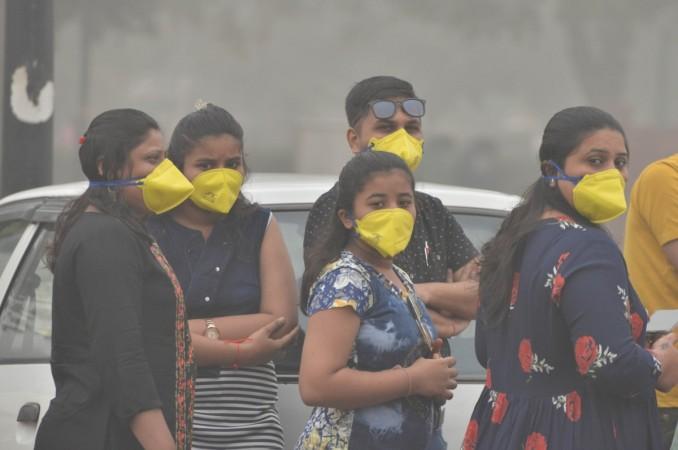
Even as a public health emergency was sounded in the Delhi-NCR region in the backdrop of the air quality being in the 'severe' category, the AQI index by the Central Pollution Control Board shows Delhi does not even feature in the 10 most polluted cities of India.
According to the average AQI calculated between November 3 (4 pm) and November 4 (4 pm), Haryana's Jind, with 448 AQI, had the most toxic air among the 97 analysed cities. It was closely followed by Baghpat in Uttar Pradesh, with 440 AQI. Delhi featured on the 14th spot (AQI 407).
Nine cities in Haryana and Uttar Pradesh fared worse than Delhi in the AQI index. But the minimal discussion has been had about places apart from the national capital. With AQI of 499, Hisar and Fatehabad, on November 3, were the most polluted cities.
Stubble burning continues
According to Haryana State Pollution Control Board scientist Sunil Sheoran, the increased AQI was due to burning of firecrackers and garbage, along with the evident crop residue, reported Times of India.
The farmers continue to defy the ban on stubble burning as 52 incidents were recorded by the Haryana State Remote Sensing Centre on November 1 alone. Between September 25 and October 31, a total of 4,340 fires were recorded.
In the backdrop of this data, Union Agriculture Minister Narendra Singh Tomar said the incidents of stubble burning have gone down by 12 percent. However, residents of the area say air pollution only seems to be increasing. "Every year, air quality begins to worsen from October. But the government wakes up only after the situation becomes alarming," a Ghaziabad resident was quoted as saying by TOI.

What the Supreme Court said
An SC bench, hearing the arguments on stubble burning, said on Monday the time has come to fix accountability and stop the violation of Article 21 of the Constitution. "Protection of life and personal liberty is prioritised and no person shall be deprived of his life or personal liberty except according to procedures established by law," Justice Arun Mishra said.
Justice Mishra emphasised that due to air pollution "people are dying and crying" as the Centre and state government continue to be at loggerheads.
"Shocking state of affairs. Scientific data regarding poor air quality is published every day. People are being advised to not come back to Delhi.... why are we not able to create a situation which is pollution-free for everyone? It is writ large that state government and civic bodies have failed to comply with the court's direction. Court's directions have been violated with impunity," he observed.
Delhi pollution in focus
However, the focus of the discourse remained the spiralling pollution levels in Delhi. "Why has the media been painting Delhi as polluted? Who will pull up other CMs?" a Twitter user questioned.
"What's pertinent to note is that the AQI levels across the rice harvesting states suffer post-harvest. We need to have a solution for entire India and not Delhi focused just because it is the capital," another user noted.

Measures like the implementation of the odd-even rule, increasing the green cover and banning of diesel generators have only been enacted in Delhi, even as haze prevails in most parts of Punjab, Haryana and Uttar Pradesh.
Some respite came to the national capital as high wind speed led to the improvement of air equality on Monday evening, according to government pollution monitoring agency SAFAR. "High surface and boundary layer winds are expected on Tuesday also. A fresh western disturbance, scattered rainfall and change in wind direction are likely to positively influence the AQI in the region," said SAFAR.
But data on major pollutants in other urban centres across other north Indian states are yet to be released.

















